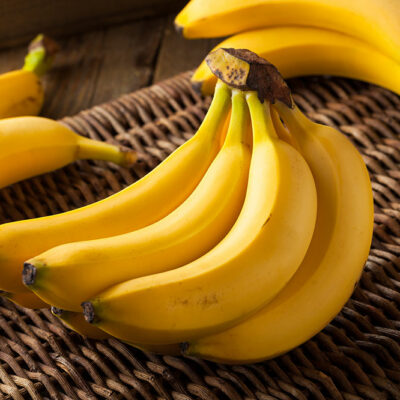
Early Warning Signs and Food Regimes for Prostate Cancer
Prostate cancer is one of the most common cancers globally. The tumor begins in the prostate gland and can be detected through screening, after which the treatment procedure is determined. While standard treatments exist, clinical trials on and for prostate cancer determine how effective new therapies can be. However, aside from therapies, it is essential to eat the right foods to reduce the growth rate of cancer cells and improve the effects of treatment.
Early signs of prostate cancer
Though early stages of the condition are symptomatic, the signs usually start appearing as the disease progresses. Here are some of the early warning signs that should not be ignored.
Frequent urination
One of the early warning signs of prostate cancer is the need to urinate frequently, especially at night. As the tumor grows, the pressure on the urethra or bladder results in more need to pass urine than usual. You might also have bleeding when you are urinating.
Problems urinating
There might be a weak urinary stream or a need to strain to empty the bladder. Some men may even feel pain or burning during urination.
Loss of bladder control
Another symptom of prostate cancer is leaking urine when you laugh or cough.
Discomfort or pain in the back, hips, or pelvis
One might also experience pain in the back, hips, or pelvis that does not go away with rest. It usually starts in the pelvic area. Over time, men also experience pain in those areas where prostate cancer has spread.
Painful ejaculation
Men with prostate cancer often experience sexual problems as the release of semen from the penis during orgasm is painful. Some may also notice bloody discharge in the semen on ejaculation or experience erectile dysfunction caused by prostate cancer.
Foods to manage prostate cancer
Consuming specific foods can help you recover from the side effects of treatment and also improve the outcome of prostate cancer treatment. Make sure you include these foods in your meal plans.
Tomatoes
This vegetable contains lycopene, an antioxidant that helps slow cancer cell production. Incorporate cooked or pureed tomatoes in your food as it is easier for the body to access the antioxidant. Tomato paste, tomato juice, and sun-dried tomatoes are some excellent ways to boost your lycopene intake.
Broccoli
Cruciferous vegetables like broccoli are a prostate superfood. It is high in antioxidants and essential vitamins and minerals that are known to slow the growth of prostate cancer cells. It contains a cancer-fighting compound called sulforaphane. Add this cruciferous vegetable to stir-fries, soups, and salads.
Fish
Fatty fish found in cold waters, like salmon, sardines, herring, and trout, are good sources of omega-3 fatty acids. Higher consumption may help slow the progression of cancer and lower the recurrence risk. Thus, aim to consume fish at least twice a week to get adequate omega-3 fatty acids.
Green tea
Many people drink green tea for immunity and overall well-being. This beverage contains special compounds called catechins that help prevent healthy cells from mutating. Various laboratory and clinical trials on prostate cancer have evaluated the role of catechins in inhibiting cancer-related cells which in turn reduces the progression of prostate cancer.
Pomegranate juice
Due to their high level of antioxidants, pomegranates may help inhibit the production of prostate cancer cells. A study found that consuming pomegranate juice can slow PSA (prostate-specific antigen) doubling time. Try to drink eight ounces of juice daily for better prostate health.
Foods that should be avoided during prostate cancer treatment
Prostate cancer can weaken your immune system, which is why good nutrition is vital throughout the treatment. At the same time, certain foods can negatively impact your therapy. Make sure to avoid the following foods during prostate cancer treatment.
Dairy
A meal plan high in full-fat dairy products has been associated with the development of prostate cancer. The consumption of whole milk has been linked to an increased risk of progression to fatal prostate cancer. People with this disease should avoid full-fat dairy products and instead opt for non-dairy options such as almond milk, rice milk, and coconut milk.
Red and processed meat
During prostate cancer treatment, it is wise to avoid the consumption of red meat or processed meats, such as ham, sausages, and salami. Cooked meat produces carcinogenic by-products called heterocyclic amines, which are harmful to the prostate. Eating red and processed meats can aid cancer cell growth and increase the risk of death from prostate cancer more significantly.
Fatty foods
Fatty foods are not good for your overall health, including your prostate. Barbequed or grilled foods and deep-fried foods can alter the immune system and trigger chronic inflammation of the prostate gland. Avoid such foods altogether as they may worsen outcomes after treatment.
Sugary foods
Sugary foods provide no nutrition and are high glycemic carbohydrates that are not beneficial for anyone. Sweetened snacks and drinks like cookies, pies, cakes, and candies can reduce immunity and cause other complications. Consuming such foods can send blood sugar levels soaring, impacting the prostate gland. It is, therefore, best to avoid sugary foods during prostate cancer treatment.
Eggs
Eggs contain choline, a compound that increases prostate cancer progression risk. Though the substance is found in most animal foods, it is more concentrated in eggs and should be eliminated from the meal plan of prostate cancer patients during treatment.
Conclusion
For those who are diagnosed with prostate cancer, maintaining a well-balanced food regime during the treatment period is crucial. This can help them feel better while reducing the side effects of treatment. Making food changes early in life can go a long way in the prevention of prostate cancer.


